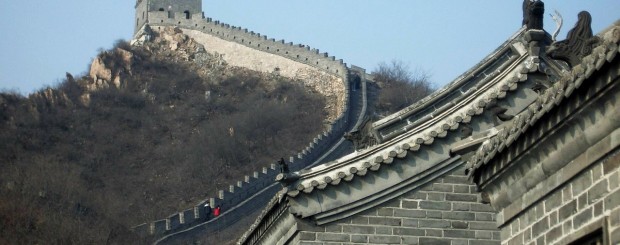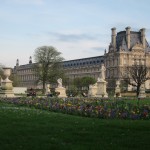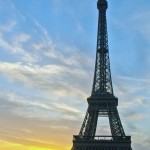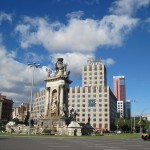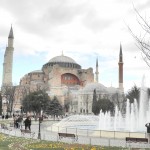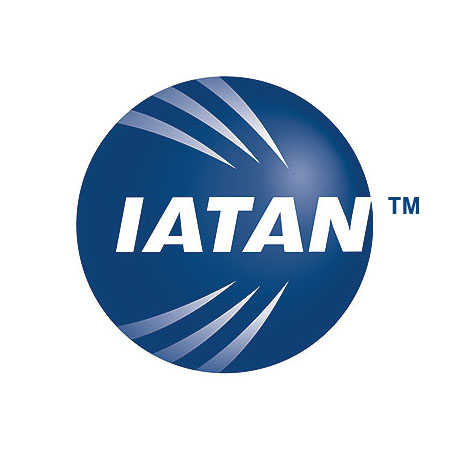As the saying goes, in Shanghai, you can see a hundred years of Chinese history. In Beijing, you can see one thousand years, but in Xian, the ancient capital of China, you can see three thousand years. Visit all three of China’s flagship cities during this tour and view China’s past, present and future.
In this tour, you will explore China’s glorious history by visiting the most famous historical sites, well-preserved ancient towns, as well as experiencing ancient Chinese traditions.
Daily Itinerary
Day 1
Arrive Beijing : Attend a welcome party with an introduction of the tour and local culture.
Day 2
Drum Tower, Hutong tour, Forbidden City, Tiananmen Square, Wang Fujing Street:’starting from the ancient landmark of Beijing the Drum Tower, you will have a traditional Beijing breakfast at the famous Yao’s Restaurant. The driver of a manpowered tricycle will take you through old Hutongs and tell you stories about each of them. You are welcome to stop and meet local families to experience their daily life. In the afternoon, visit the Forbidden City while being accompanied by a certified Chinese history teacher. The guide will tell you about the life of Chinese emperors, their historical legacies, and their secrets. South of the Forbidden City is Tiananmen Square, the largest public square in the world. Not far from Tiananmen’square is Wang Fujing Street, the commercial center of Beijing and home to a myriad of shops and restaurants. Take the opportunity to try Quanjude Roast Duck, Dong Laishun Hotpot, stop by China Photo Studio, Hengdeli Watch and Clock Shop. Each of these stores has been a landmark during the rapid development of this city. In the evening, enjoy nightly entertainment at the Beijing Opera, an acrobatic show and a Kung Fu demonstration.
Day 3
Huailai Great Wall, Summer Palace: Beijing is adjacent to different portions of the Great Wall like Badaling, Juyongguan and Mutianyu, but what you will visit is better preserved than any of those. This portion was built during the Ming Dynasty (1368-1644) and used to protect China from Mongrel raids. On the way to the Great Wall, there are many villages and towns which have several hundred years of history and have yet to be developed as tourist attractions. Every antiquated house harkens back to a simpler times. You will have excellent views to take photos of the Great Wall and because this area is more remote, you may examine the wall or sit on the beacon tower before heading back to lunch. In the afternoon, you will visit the most protected royal garden in Beijing the Summer Palace. At sunset, sailing on Kunming Lake followed by a royal feast to complete your day of travel. After dinner, you ll be treated to a Chinese medical massage.
Day 4
Beijing-Pingyao County: If you want to experience local morning exercises, you cannot miss the Temple of Heaven’s courtyard. Badminton, daibolo, Tai Chi, Kung Fu, singing Beijing Opera, flying kites and dancing, are all popular morning exercises in Beijing. You will have the chance to learn from local practitioners who will gladly teach you how to play before departing on the next part of your journey. Transfer to Pingyao County by bullet train.
Day 5
Pingyao, Qiao’s Compound: Pingyao is located in the middle of Shanxi Province in northern China, with a history of more than 2,700 years. Pingyao used to be the financial center of China in late Qing Dynasty (1644-1911) and its first bank, Rishengchang Draft Bank, is the pioneer of China’s banking industry. At its peak, it controlled almost half of the Chinese economy and its branches were widespread throughout China’s capital and big cities, as well as in some western and southeastern counties. The main street in Pingyao was considered the Wall Street in ancient China. The current Pingyao looks very similar as it did 600 years ago.
Qiao’s Compound is an estate for famous businessman and banker Qiao Zhiyong and his family during the Qing Dynasty. It covers 9,000 square meters and has 313 rooms. It is considered as one of the finest remaining examples of over-indulgent private residences in northern China. In the evening, enjoy a multimedia show that presents the 2,000 year history of Pingyao.
Day 6
Xian: In the morning, fly to Xian. At noon, have a traditional local meal — the Pita Bread Soaked in Lamb Soup. In the afternoon, learn Chinese calligraphy in the Beilin Museum. In the evening, you can walk along the Ancient City Wall, the world’s best preserved ancient city wall. You will appreciate the rise and fall of an era.
Day 7
Xian: Huaqing Pool was built in 723 AD by Emperor Xuanzong of the Tang Dynasty for his favorite consort Yang Guifei. It is famous for the 43 C multi-mineral hotspring and its importance in Xuanzong’s tragic romance with Yang Guifei. Afterwards, visit the Terracotta Warriors. Qinshihuang, the first emperor in Chinese history, hoped to keep his worldwide rule after his death. He built a majestic mausoleum and asked to bury himself in the center of the mausoleum, surrounded by large numbers of terracotta warriors, chariots and weapons. These terracotta warriors are called the eighth wonder of the world and each one is unique. In the evening stroll through the lively Muslim Quarter to explore and enjoy Islamic food.
Day 8
Fly to Shanghai after breakfast.
Day 9
Shanghai?Wu Zhen: Begin your morning by strolling through the old streets in downtown Shanghai on your way to admire the beauty of Yuyuan Garden, and taste various local delicacies in the Old Town district. In the evening, you will arrive in Wu Zhen, a beautiful and quiet water town near Hangzhou. After dinner, take a boat ride through the water city and immerse yourself in the calm river town while decompressing from the hustle of the big city.
Day 10
Wu Zhen?Hangzhou: When you wake up in Wu Zhen, you will be greeted by elderly women washing clothes in the river, as old men do their morning exercises in the alleys throughout the city. Enjoy a simple breakfast and relax in the peace and quiet of a small water town before being transported to Hangzhou. Hangzhou is the birthplace of the Legend of White Snake, a beautiful love’story of a snake fairy and a young scholar. In the afternoon, you will visit a Longjing Tea garden and have the chance to bake tea leaves and drink tea with local artisans.
Day 11
Suzhou?Shanghai: Start the day in Suzhou’s Chinese gardens and silk factories. In the past, it was the national silk center. Many silk masterpieces for the royal family were produced here. You ll have the chance to see the whole process of making silk at the Suzhou First Silk Mill, which has been in operation for than 80 years. Visit the Humble Administrator’s Garden, one of the finest Chinese gardens in the country.
You will return to Shanghai in the evening and enjoy the flickering lights on the Bund and the winding Huangpu River.
Day 12
Departure
Social Share
Recent Packages
Essence of Europe
Europe Highlight Tours
Portugal & Spain
Turkey
Best of Italy
What’s Included
- Overnight hotel accomodations for all destinations with meals (as stated).
- Domestic transportation between destinations by either rail, car, or air.
- Taxes, surcharges, and fuel charges for transportation.
- Entry fees to each attraction or sightseeing excursion.
- A local English-speaking tour guide for each city. He or she will also assist with transfers.
Contact Us
- 440 E. Huntington Dr.
Suite 300
Arcadia, CA 91006 - Phone: (626) 802-4843
- Fax: (626) 993-6601
- Email: info@exo-tours.com

